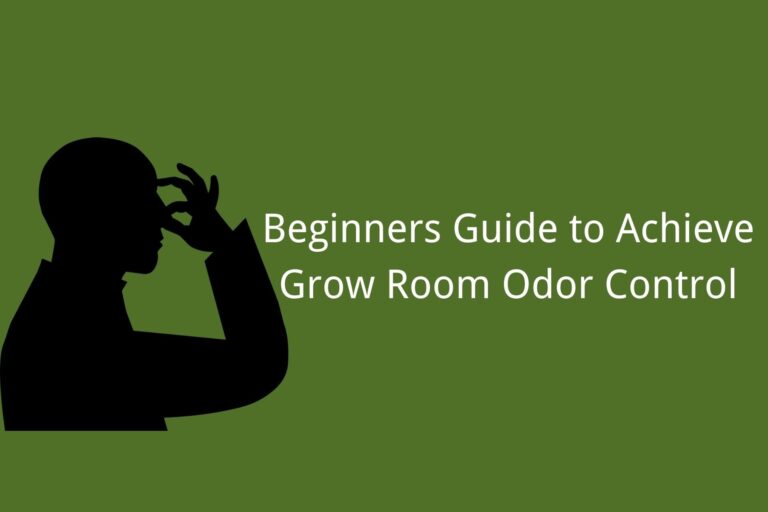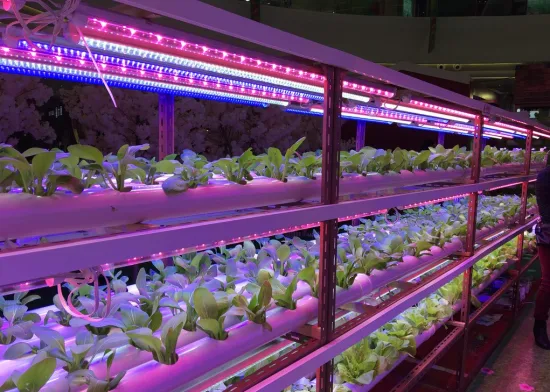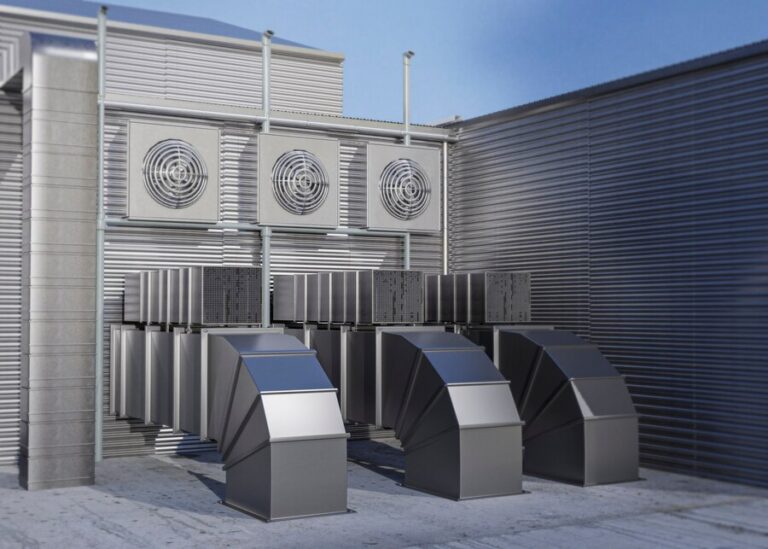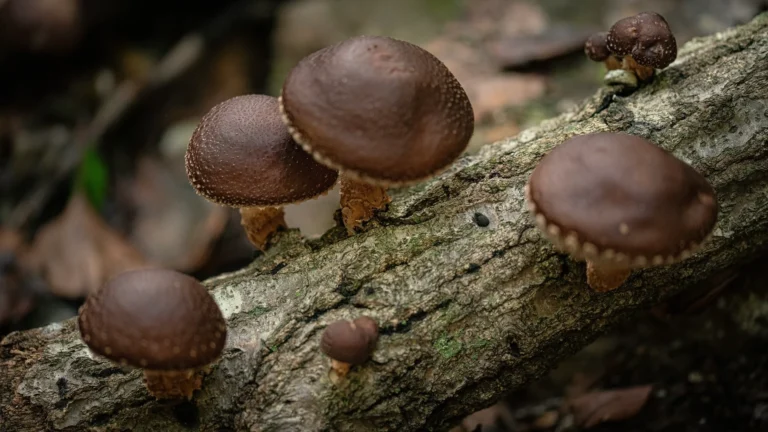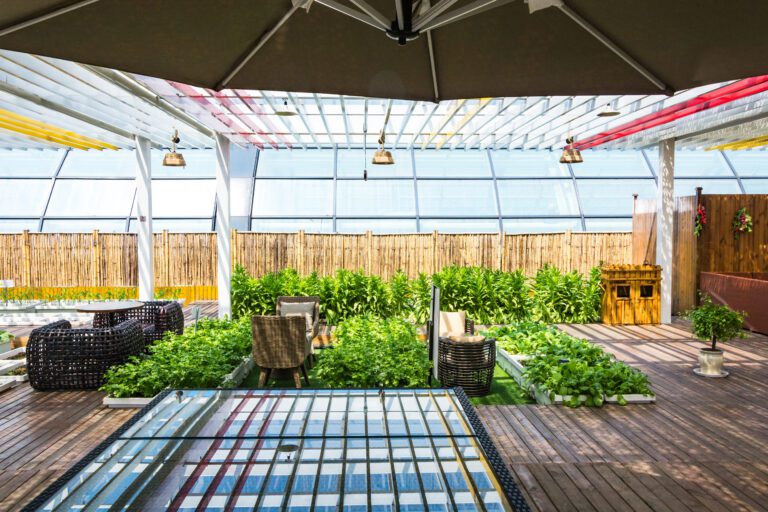Growing Potatoes In A Bucket: Small Space Spuds
Table of Contents
Advantages of Growing Potatoes in Containers
Potatoes are a versatile and widely consumed vegetable that can be grown in various ways, including in containers. Growing potatoes in containers offers several advantages that make it an appealing option for gardening enthusiasts. One of the key advantages is the ability to maximize limited space. Container gardening allows individuals with limited yard space or those living in urban areas to cultivate potatoes without the need for a traditional garden bed.
Another advantage of growing potatoes in containers is the improved control over soil conditions. With traditional potato cultivation, soil quality can vary and may affect the health and yield of the plants. However, in container gardening, gardeners have the flexibility to create a customized soil mix that is tailored to meet the specific needs of potatoes. This allows for better nutrient absorption, moisture retention, and overall plant health. Additionally, container gardening provides the opportunity to easily monitor and adjust soil pH levels, ensuring an optimal growing environment for potatoes.
By taking advantage of container gardening, individuals can reap the benefits of growing potatoes in restricted spaces while maintaining control over their growing conditions. Whether you have a small balcony, a rooftop garden, or just limited yard space, container gardening offers a practical and efficient solution to cultivate a bountiful potato harvest.
Selecting the Right Container for Potato Cultivation
When it comes to potato cultivation in containers, selecting the right container is crucial for the success of your plants. The container you choose will directly impact the growth, development, and overall health of your potato plants.
First and foremost, it is important to select a container that provides adequate space for your potatoes to grow. Potatoes require ample room for their roots to spread, so opt for larger containers that allow for proper root development. Additionally, containers should have a depth of at least 12 inches to accommodate the growth of tubers.
In terms of material, it is recommended to choose containers made of breathable materials, such as fabric or plastic with adequate drainage holes. These materials allow for proper aeration and water drainage, preventing waterlogged soil and the risk of root rot. Moreover, containers that come with handles or wheels could be beneficial as they provide convenience in terms of mobility, allowing you to move your containerized potato garden to an optimal location with ease.
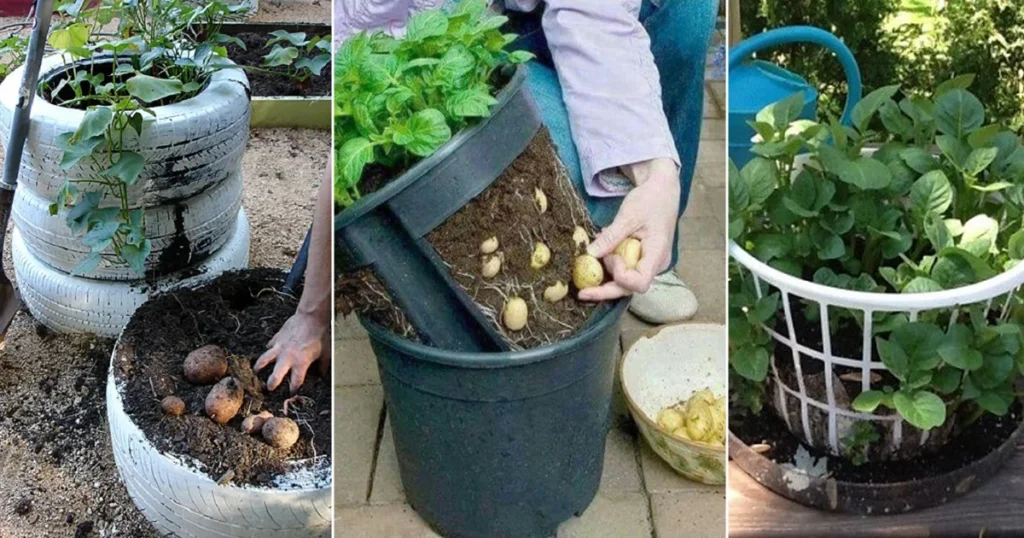
Choosing the Best Potato Varieties for Container Gardening
When it comes to choosing the best potato varieties for container gardening, there are several factors to consider. The first consideration is the size of the container. Since potatoes need ample space for their roots to grow, it is advisable to opt for compact or dwarf varieties that do not require too much space. Varieties such as ‘Yukon Gold’ and ‘Red Pontiac’ are ideal for container gardening as they have a smaller plant size but still produce a good yield.
Another important aspect to consider is the maturity period of the potato variety. For those looking for a quick harvest, early-maturing varieties like ‘Norland’ and ‘Caribe’ are excellent choices. These potatoes mature within 65-75 days and are perfect for gardeners who want to enjoy fresh, homegrown potatoes sooner rather than later.
In addition to size and maturity, it’s important to select potato varieties that are disease-resistant. Diseases such as late blight and scab can affect potato plants, so choosing resistant varieties can help mitigate these risks. Examples of disease-resistant potato varieties suitable for container gardening include ‘Chaleur’ and ‘Elba.’
By considering container size, maturity period, and disease resistance, you can make an informed choice when selecting the best potato varieties for your container garden. Remember that different varieties have slightly different growing requirements, so be sure to follow the specific guidelines for each variety to achieve optimal results.
Preparing the Soil Mix for Optimal Potato Growth
Preparing the soil mix is a crucial step in ensuring optimal potato growth in container gardening. The right soil composition aids in providing the necessary nutrients, water retention, and aeration that potatoes require for healthy development. When preparing the soil mix, it is important to strike a balance between fertility and proper drainage.
A good starting point is using a high-quality potting mix, which generally consists of a combination of peat moss, vermiculite or perlite, and organic matter. These components contribute to a well-draining medium that prevents waterlogging and provides sufficient aeration to the potato roots. Incorporating organic matter, such as compost or well-rotted manure, further improves the soil fertility by enhancing its nutrient content and moisture-holding capacity.
To ensure the soil mix is optimized specifically for potatoes, it is advisable to add additional amendments. Adding balanced organic fertilizers or slow-release granular fertilizers can provide a steady supply of nutrients throughout the growing season. It is important to carefully follow the package instructions to avoid over-fertilization, which can burn the plants’ roots. Additionally, incorporating a handful of bone meal or rock phosphate into the soil mix can boost phosphorus levels, which is vital for root development, flowering, and fruit set in potato plants. Taking the time to properly prepare the soil mix will contribute to the successful growth and abundant harvest of potatoes in containers.
Certainly! When preparing the soil mix for optimal potato growth, consider the following steps and components:
| Component | Role in Soil Mix |
|---|---|
| Nutrient-Rich Soil | – Use well-draining, nutrient-rich soil. – A loamy texture is ideal. – Slightly acidic soil with a pH range of 5.0 to 6.0 is preferred. – Potatoes tolerate pH as low as 4.5 and as high as 8.0 but perform best within the recommended range. |
| Well-Rotted Compost | – Add 3-4 inches of well-rotted compost to the soil. – Mix it thoroughly with the existing soil. – Compost provides essential nutrients and improves soil structure. |
| Soil Aeration | – Loosen the soil up to a depth of 12 inches. – Turn the soil several times to break up lumps. – Remove stones and debris. – Proper aeration allows roots to expand easily. |
| Drainage | – Ensure the soil drains well. – Good drainage prevents waterlogged soil. – Sandy loam with added organic matter works well. – Sand can be added to improve drainage. |
Steps to Planting Potatoes in a Bucket
Potatoes are a versatile and popular vegetable that can be easily grown in containers, making them an excellent choice for gardeners with limited space. Planting potatoes in a bucket is a simple and efficient way to cultivate these tubers. Here are the steps to get you started on your potato-growing journey.
Step 1: Choose a suitable bucket for your potato plants. Look for a container that is at least 12 inches deep and has drainage holes at the bottom to prevent waterlogging.
Step 2: Prepare the bucket by filling it with a lightweight potting mix. Avoid using garden soil as it can become compacted and hinder root growth. Mix in some well-rotted compost or organic matter to provide additional nutrients.
Step 3: Select your potato varieties. Some recommended varieties for container gardening include ‘Yukon Gold’, ‘Red Pontiac’, and ‘Fingerling’. Choose disease-resistant varieties for a healthier crop.
Step 4: Pre-sprout your potatoes before planting. Place the tubers in a tray or egg cartons, keeping them in a cool, well-lit area for a few weeks until they develop small sprouts.
Step 5: Plant your pre-sprouted potatoes in the prepared bucket. Place two or three sprouted potatoes in the soil, making sure the sprouts are facing upwards. Cover them with an additional layer of soil.
Step 6: As the potato plants grow, continue to add soil to the bucket, gradually covering the stems. This process, known as hilling, encourages the development of more potatoes along the buried stems.
By following these steps, you can successfully plant potatoes in a bucket and enjoy a bountiful harvest. Stay tuned for the next steps in our article on understanding the watering needs of containerized potatoes, and providing adequate sunlight and temperature for successful growth.
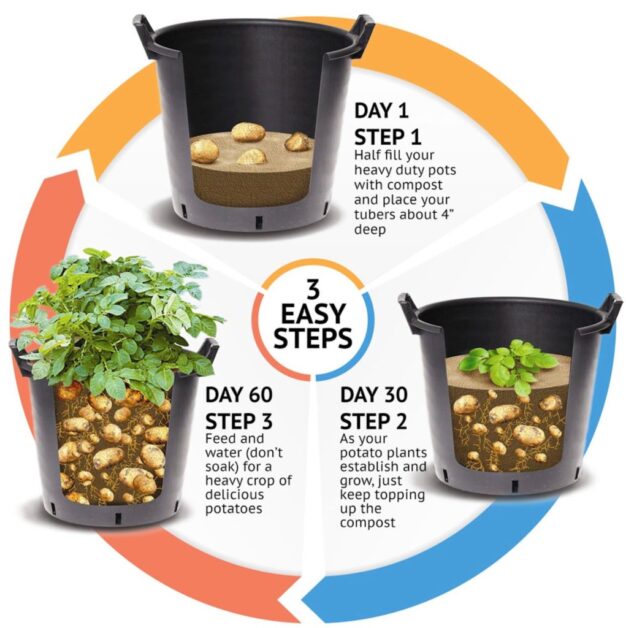
Understanding the Watering Needs of Containerized Potatoes
Containerized potatoes have specific watering needs that must be met to ensure optimal growth and yield. Understanding these needs is crucial for successful potato cultivation in containers. One important factor to consider is the type of container being used. Containers made of materials like plastic or clay tend to retain moisture better than those made of porous materials such as terra cotta. This means that containers made of porous materials may require more frequent watering to prevent the soil from drying out.
When it comes to watering frequency, it is essential to strike a balance. Overwatering can lead to poor root development and disease, while underwatering can stunt the growth of potato plants and reduce yields. To determine when to water, it is recommended to stick your finger into the soil about an inch deep. If it feels dry, it is time to water. It is also important to note that containerized potatoes may require more frequent watering compared to those grown in the ground, as containers tend to dry out more quickly. However, it is essential to avoid waterlogged soil, as this can lead to problems such as rot and nutrient leaching.
Providing Adequate Sunlight and Temperature for Successful Growth
To ensure successful growth of potatoes in containers, it is crucial to provide them with adequate sunlight and maintain optimal temperature conditions. Sunlight is an essential factor for photosynthesis, a process through which plants convert light energy into chemical energy, enabling them to grow and develop. Potatoes typically require at least six to eight hours of direct sunlight daily. Therefore, it is vital to position your containers in a location that receives ample sunlight throughout the day.
In addition to sunlight, maintaining the right temperature is equally important for the health and productivity of container-grown potatoes. These plants thrive in moderate temperatures ranging from 60 to 70 degrees Fahrenheit (15 to 21 degrees Celsius). Extreme heat or cold can impact their growth negatively. If temperatures rise above 80 degrees Fahrenheit (27 degrees Celsius), potatoes may undergo stress, leading to reduced plant vigor and decreased tuber production. Similarly, freezing temperatures can damage the plants and eventually lead to their death. Monitoring the temperature and taking necessary actions, such as providing shade during scorching days or bringing containers indoors during frost, can help ensure the optimal growth of your potato plants in containers.
Maintaining Proper Nutrient Levels for Healthy Potato Plants
Proper nutrient levels are vital for ensuring the healthy growth and development of potato plants in container gardens. Nutrients play a key role in supporting the plant’s metabolism, root development, and overall vigor. By providing the right balance of essential elements, you can enhance the plant’s ability to resist diseases, produce abundant yields, and maintain optimal health.
One of the primary nutrients that potatoes require is nitrogen (N), which is essential for building proteins and promoting vigorous leaf and stem growth. Potatoes also benefit from the presence of phosphorus (P) and potassium (K) in their fertilizer regimen. Phosphorus aids in root development and the production of flowers and fruits, while potassium is crucial for maintaining overall plant health and increasing disease resistance. Additionally, micronutrients such as iron (Fe), manganese (Mn), and zinc (Zn) are important for supporting various physiological processes in potato plants.
To ensure proper nutrient levels, it is crucial to choose a high-quality fertilizer that meets the specific needs of potatoes. Look for a fertilizer that has a balanced NPK ratio, such as 10-10-10 or 14-14-14, to provide adequate levels of nitrogen, phosphorus, and potassium. Additionally, consider using a slow-release fertilizer to provide a steady supply of nutrients over an extended period. Regularly monitor the nutrient levels in the soil and adjust the fertilizer application accordingly to maintain an optimal balance throughout the growing season.
In conclusion, maintaining proper nutrient levels is essential for promoting the healthy growth and development of potato plants in container gardens. By understanding the specific nutrient requirements of potatoes and providing them with a balanced and consistent supply of essential elements, gardeners can ensure robust crops with high yields and improved resistance to diseases.
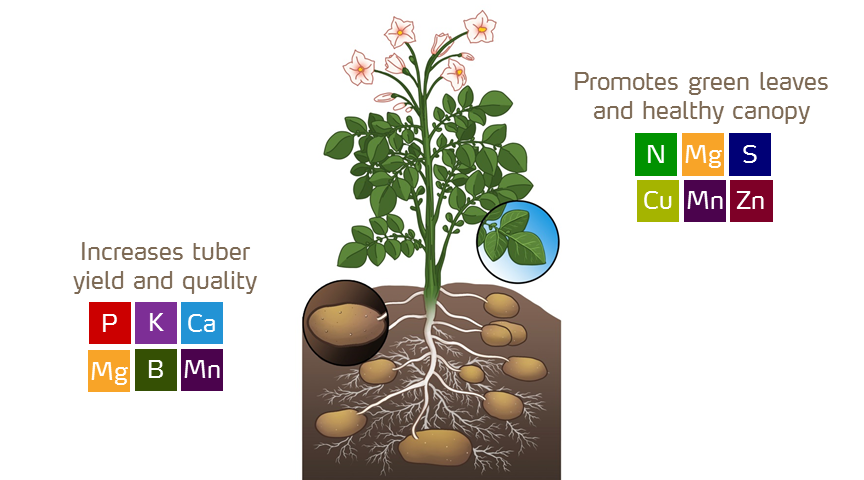
Identifying and Managing Common Pests and Diseases in Containers
Pests and diseases can pose a significant threat to potato plants grown in containers. Identifying and managing these issues is crucial to maintaining plant health and maximizing yields. There are several common pests and diseases that gardeners should be aware of when cultivating potatoes in containers.
One of the most common pests encountered in containerized potato gardens is the Colorado potato beetle. These beetles have a voracious appetite for potato foliage and can quickly defoliate plants if left unchecked. To identify the presence of Colorado potato beetles, look for orange-yellow eggs on the underside of leaves and adults with distinctive yellow and black striped bodies. Regular inspection and handpicking of beetles and eggs can help control their population. In severe cases, organic insecticidal sprays containing ingredients such as pyrethrin or neem oil can be used.
Potato plants in containers are also susceptible to various fungal and bacterial diseases. Early blight and late blight are two common fungal diseases that can affect potato foliage, causing leaves and stems to develop dark, irregular spots. To manage these diseases, it is important to remove and destroy infected plant parts immediately. Fungicidal sprays containing copper-based compounds can be used preventively or as a treatment, following the instructions provided by the manufacturer. Regularly monitoring the plants and maintaining proper air circulation around the containers can also help prevent the spread of these diseases.
Certainly! Let’s explore the role of nutrients in maintaining healthy potato plants through a helpful table:
| Nutrient | Function |
|---|---|
| Nitrogen (N) | – Essential for foliage growth. – Promotes leaf development and overall plant vigor. – Apply during early growth stages. |
| Phosphorus (P) | – Crucial for root development and energy transfer. – Supports tuber formation. – Apply during planting and early growth. |
| Potassium (K) | – Aids in sugar transport, stomatal control, and disease resistance. – Vital during tuber bulking. – Apply throughout the growing season. |
| Calcium (Ca) | – Strengthens cell walls and reduces susceptibility to diseases. – Apply as needed. |
| Sulfur (S) | – Essential for amino acid synthesis. – Apply as needed. |
| Magnesium (Mg) | – Central component of chlorophyll. – Apply as needed. |
| Iron (Fe) | – Essential for chlorophyll synthesis. – Apply if deficiency symptoms appear. |
| Manganese (Mn) | – Necessary for photosynthesis. – Apply if deficiency symptoms appear. |
| Boron (B) | – Aids in cell wall formation and pollen tube growth. – Apply as needed. |
| Zinc (Zn) | – Influences auxin synthesis. – Apply if deficiency symptoms appear. |
| Copper (Cu) | – Supports nitrogen and carbohydrate metabolism. – Apply if deficiency symptoms appear. |
| Molybdenum (Mo) | – Component of enzymes involved in nitrogen metabolism. – Apply if deficiency symptoms appear. |
Pruning and Training Techniques for Compact Potato Plants
Pruning and training techniques are essential for maintaining compact potato plants in container gardens. By properly managing the growth and development of the plants, gardeners can maximize their yield and ensure healthy, productive plant growth.
One crucial technique is the removal of excessive foliage. As potato plants grow, they tend to produce an abundance of leaves, which can limit airflow and create a conducive environment for diseases such as late blight. Regularly pruning off some of the leaves, especially those that are damaged or showing signs of disease, can help improve air circulation and reduce the risk of infection. This practice also directs the plant’s energy towards tuber production, ultimately increasing the size and quality of the harvest.
In addition to pruning, training the potato plants can further enhance their compact growth. This technique involves gently manipulating the plants’ stems and branches to encourage a more upright and contained habit, preventing sprawling or excessive top growth. Training can be achieved by gently tying the main stems to stakes or using trellises or cages specifically designed for container gardening. This method not only saves space but also helps the plants receive better sunlight exposure, leading to healthier foliage and improved tuber development. Successful training relies on regular monitoring and adjustment as the plants grow, ensuring that they remain upright and well-supported throughout their growth cycle.
Monitoring and Adjusting pH Levels in Containerized Potato Gardens
Maintaining the optimal pH levels in containerized potato gardens is crucial for the successful growth and production of healthy plants. The pH level, which measures the acidity or alkalinity of the soil, directly affects nutrient availability and uptake by the potato plants. If the pH is too high or too low, essential nutrients may become insoluble and unavailable for the plants, leading to nutrient deficiencies and stunted growth.
To monitor the pH levels in your containerized potato gardens, it is recommended to regularly test the soil using a pH meter or a soil testing kit. These tools provide accurate measurements and allow you to make informed decisions on the necessary adjustments. Ideally, the pH range for potatoes should be between 5.5 and 6.5, slightly acidic to neutral.
In case the pH level is too low (acidic), adding agricultural lime or dolomite lime can help raise it to the desired range. On the other hand, if the pH is too high (alkaline), amending the soil with elemental sulfur or composted organic matter like pine needles or coffee grounds can help bring it down. Regularly monitoring and adjusting the pH levels in your containerized potato gardens will create a favorable environment for the plants to thrive and maximize their growth potential.
Strategies for Encouraging Flowering and Fruit Set in Potatoes
Encouraging flowering and fruit set in potatoes is crucial for a successful harvest. The process of encouraging this stage of potato growth involves understanding the plant’s needs and providing the necessary conditions for optimal development. One effective strategy is to choose potato varieties that are well-suited for flowering and fruit set in containers. Varieties such as ‘Yukon Gold’ and ‘Kennebec’ have proven to be reliable options for container gardening, as they are known to produce abundant flowers and set plenty of fruits.
In addition to selecting the right potato variety, proper nutrition is essential for encouraging flowering and fruit set. Providing a balanced fertilizer that is rich in phosphorus and potassium can help stimulate flower production. It’s important to note that excess nitrogen can inhibit flowering and fruit set, so it’s best to use a fertilizer with a lower nitrogen content. Maintaining adequate moisture levels and ensuring good drainage are also crucial factors in supporting healthy flower development and preventing issues such as blossom end rot, which can hinder fruit set. By providing the right nutrients and ensuring proper environmental conditions, gardeners can effectively encourage the flowering and fruiting process in container-grown potatoes.
Harvesting and Storing Potatoes Grown in Buckets
When it comes to harvesting and storing potatoes grown in buckets, there are a few key steps to ensure success. First, it’s important to wait until the plants have reached maturity. This is typically indicated by the leaves turning yellow and starting to die back. Gently dig around the edges of the bucket to loosen the soil, then carefully remove the potatoes from the container. Be sure to handle them with care to avoid bruising or puncturing the tubers.
Once the potatoes are harvested, they should be stored in a cool, dark, and well-ventilated area. Avoid exposing them to direct sunlight, as this can cause greening and the development of toxic solanine compounds. It’s also important to remove any potatoes that show signs of damage or disease to prevent them from affecting the rest of the stored crop. By properly harvesting and storing your potatoes, you can enjoy the fruits of your labor for weeks, or even months, to come.

Creative Ideas for Maximizing Space and Yield in Container Gardens
One of the key challenges of growing plants in container gardens is maximizing space and yield. With limited area to work with, it becomes crucial to employ creative ideas that can help you make the most out of your container garden. By implementing strategic techniques, you can optimize your space and increase your crop’s productivity.
One effective approach to maximize space in a container garden is vertical gardening. Utilizing vertical structures such as trellises, stakes, or cages allows you to grow plants vertically, taking advantage of the upward space. For instance, growing vining vegetables like tomatoes or cucumbers vertically can save valuable ground space while still providing ample room for growth and optimal sunlight exposure. Additionally, consider using hanging baskets or planters to cultivate plants that can cascade or trail, adding another layer of greenery to your container garden.
Tips for Success with Year-Round Potato Cultivation in Small Spaces
Successful year-round potato cultivation in small spaces requires careful planning and attention to detail. With the right approach and techniques, you can enjoy a continuous supply of fresh, homegrown potatoes throughout the year.
One important aspect to consider is the choice of potato varieties. Opt for compact and high-yielding varieties that are well-suited for container gardening. Look for varieties that have a shorter growing season and are disease-resistant. Popular choices for container cultivation include Yukon Gold, Red Pontiac, and Fingerling potatoes.
In addition to selecting the right potato varieties, it’s crucial to provide optimal growing conditions for your plants. Potatoes thrive in well-draining soil that is rich in organic matter. Prepare a soil mix that is lightweight and nutrient-rich, ensuring it can retain moisture while allowing excess water to drain. Regularly monitor and adjust the pH levels of the soil mix to maintain a slightly acidic environment, which is ideal for potato growth.
Stay tuned for even more tips and strategies to make the most of your small space and achieve year-round potato cultivation success!
• Choose compact and high-yielding potato varieties for container gardening
• Look for varieties with a shorter growing season and disease resistance
• Popular choices include Yukon Gold, Red Pontiac, and Fingerling potatoes
• Provide optimal growing conditions such as well-draining soil rich in organic matter
• Prepare a lightweight and nutrient-rich soil mix that retains moisture while allowing drainage
• Regularly monitor and adjust pH levels to maintain a slightly acidic environment ideal for potatoes
Inspiring Examples of Beautiful and Productive Potato Bucket Gardens
Potato bucket gardens have gained popularity in recent years as a practical and visually appealing option for small-space gardening. These compact gardens not only maximize limited areas, but they also provide a beautiful and productive addition to any outdoor or indoor space. Let’s take a look at some inspiring examples of potato bucket gardens that showcase the incredible possibilities of this innovative gardening method.
One stunning example is a vertical potato bucket garden that utilizes tiered planting to create a stunning display of cascading foliage. By stacking multiple buckets on top of each other, gardeners can grow a larger number of potatoes in a small footprint. This not only increases the yield but also adds a unique visual element to the garden. The vibrant green foliage spilling over each bucket creates a picturesque scene that is sure to impress any visitor.
Another captivating example is a patio potato bucket garden that combines functionality and aesthetics. This setup showcases the versatility of potato cultivation in containers, as it transforms an ordinary patio into a vibrant and productive garden space. The carefully arranged buckets, filled with lush potato plants, provide an inviting and picturesque backdrop for outdoor gatherings and al fresco dining. With the right selection of potato varieties and proper care, such a garden can yield a bountiful harvest, all while adding charm and greenery to the patio area.
For more details watch the below video.
Can I grow potatoes in any type of container?
While potatoes can be grown in various containers, it is important to select a container that is deep enough to accommodate the growing roots and has good drainage. Some suitable options include buckets, large pots, or specialized potato grow bags.
How do I choose the best potato variety for container gardening?
When selecting potato varieties for container gardening, look for those that are compact and suitable for smaller spaces. Varieties such as Yukon Gold, Red Norland, or Fingerling potatoes are often recommended for container gardening due to their smaller size and productive yields.
What is the recommended soil mix for growing potatoes in containers?
A well-draining soil mix is crucial for growing potatoes in containers. It is recommended to use a mix of potting soil, compost, and perlite or vermiculite to ensure proper drainage, moisture retention, and nutrient availability for the plants.
How often should I water my containerized potatoes?
The watering needs of containerized potatoes may vary depending on weather conditions, container size, and soil mix. It is important to keep the soil consistently moist but not waterlogged. Typically, watering once or twice a week, ensuring the soil is evenly moist, is sufficient.
Can I grow potatoes in containers indoors?
Yes, potatoes can be grown in containers indoors as long as they receive adequate sunlight or artificial grow lights. Ensure proper ventilation and temperature control to mimic outdoor conditions. Indoor potato gardening can be a great option for year-round cultivation in small spaces.
How do I prevent and manage pests and diseases in containerized potato gardens?
To prevent pests and diseases in containerized potato gardens, practice good sanitation, such as removing any infected or damaged foliage, and regularly inspecting plants for signs of pests or diseases. Additionally, using organic pest control methods, such as neem oil or insecticidal soap, can help manage common pests.
Can I reuse the soil from my containerized potato garden for future plantings?
It is generally recommended to refresh the soil mix when reusing it for future plantings. Soil can become depleted of nutrients and may harbor pests or diseases. Adding fresh compost or organic matter and ensuring proper soil sterilization can help maintain optimal conditions for future plantings.
How long does it take for potatoes to mature in container gardens?
The time it takes for potatoes to mature in container gardens can vary depending on the potato variety and growing conditions. On average, it takes approximately 10 to 12 weeks for early varieties and 14 to 20 weeks for maincrop varieties to reach maturity and be ready for harvest.
Can I grow other plants alongside potatoes in the same container?
While it is possible to grow other plants alongside potatoes in the same container, it is important to consider their compatibility in terms of sunlight, water, and nutrient requirements. Some suitable companion plants for potatoes include marigolds, chives, or beans, which can help repel pests or provide nitrogen fixation.
How do I know when it is time to harvest my potato plants?
Potato plants are ready for harvest when the foliage starts to yellow and die back. Wait for a couple of weeks after the foliage has died back completely before harvesting. Carefully dig around the container to retrieve the potatoes, being careful not to damage them during the process.

Nicole Burke is a dynamic writer at SouthElMonteHydroponics, fueled by her passion for horticulture and environmental sustainability. Armed with a degree in Environmental Science from a renowned institution, Nicole’s expertise lies in hydroponic gardening, organic farming, and biodiversity conservation. Her insatiable curiosity and love for nature drive her to explore innovative techniques in hydroponics, seeking to revolutionize the way we grow crops in urban environments. Nicole’s writing reflects her deep commitment to promoting eco-conscious practices and fostering a deeper connection between humans and the natural world. Through her engaging storytelling, she inspires others to embrace sustainable living and harness the power of hydroponics for a greener future.

